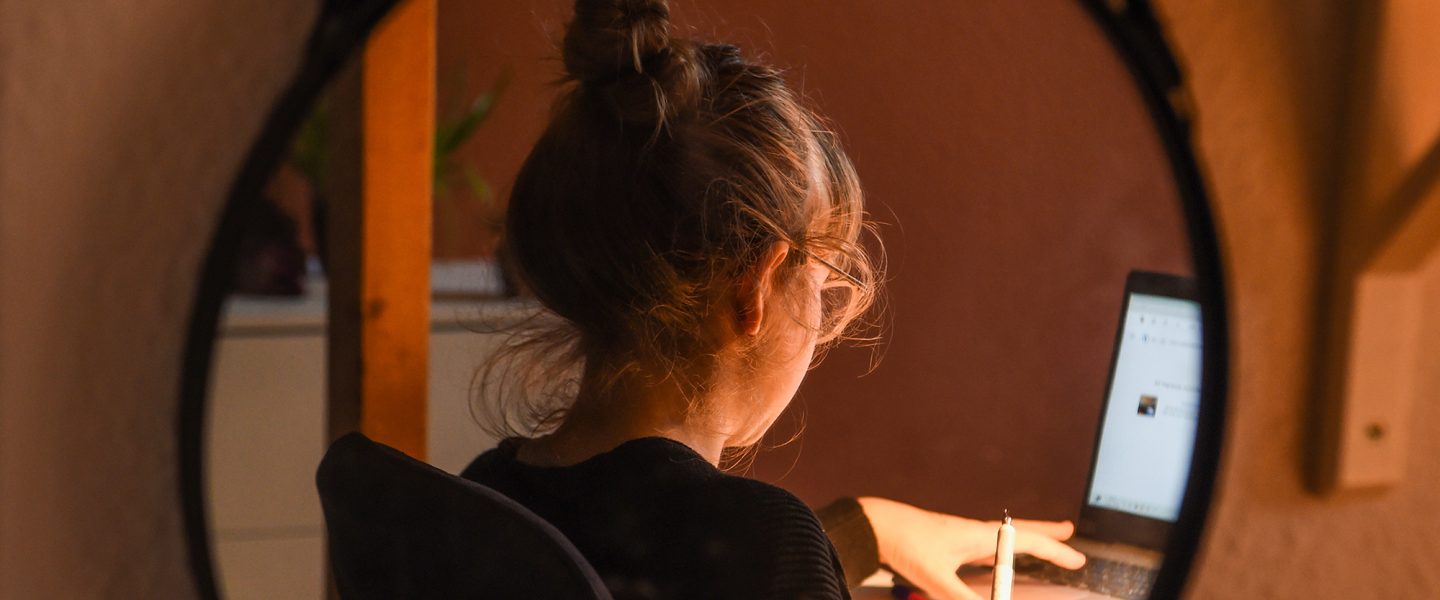Trying not to judge.
|
Listen To This Story
|
With a Twist
Our daughter Megan was six years old when we discovered she was racist. We were dining at a new Mexican restaurant in our town, and suddenly Megan called the waiter a derogatory term.
My wife and I were shocked. Megan had never used this language before, but after it occurred a few more times over the following weeks, we took her to a specialist who guided her through a series of tests. Afterwards, while our daughter waited patiently in the outer room, the specialist looked at us solemnly. “She’s racist all right.”
We asked him what we should do.
He gave us a leaflet and told us there were a lot of support groups that could help her negotiate her life as a racist.
“Racism used to be frowned upon,” he said. “Society took a dim view. But attitudes are changing now, and in many places it’s perfectly acceptable to be racist.”
We asked him where these places were, and he said they were all over the country, often in rural areas and often in the South, but not just in the South. “I’m sure you could find a perfectly good racist town not 20 miles from here,” he said.
We said we didn’t want to move, but we were worried that our school system might not be ready to accommodate a racist.
“You’d be surprised,” he said. “A lot of racists have been running for school board, and that changes the whole complexion of the school. Sometimes literally.”
We were concerned that Megan’s racism might inhibit her job opportunities, but when we got home and read through the leaflet, we learned that there were many careers open to racists, including right-wing think tanks, politics, and law enforcement. We still considered putting her in an “antiracism” program or hiring a private tutor.
But we’ve learned that being racist is no impediment to a successful life, and in fact a recent president of the United States was racist, as are several current members of Congress.
Our other daughter, Colwyn, was born perfectly — I was going to say “normal,” but of course that’s putting a value judgment on racism, which we’ve learned not to do.
Megan is 12 now and doing well in school. She started a Junior Whiteness League and wrote her history term paper on the Replacement Theory. When she got a D, she complained to the newly elected school committee, who had the teacher fired. The “replacement” teacher gave her an A.
Instead of joining the Girl Scouts she joined the Proud Girls, who demonstrate against voting rights and various Muppets, and are raising money for a trip to a white supremacist rally in Alabama in February. We were initially worried that she was too young to be going on this trip by herself, but we were assured that all the children would be wearing body armor and issued their own truncheon, while the staff would be armed with semiautomatic weapons.
The uniform we’ve had to buy is all white, which at least is a good color staple.
We occasionally get the odd complaint about Megan’s racist rhetoric in shops and restaurants, but we try to explain to people the situation, i.e., that she’s just a racist.
We love our little racist daughter and we want her to have pride in whatever beliefs she holds, even if we don’t understand them ourselves and might find them personally abhorrent. We know the world is changing, and what was considered unacceptable just a few years ago is being widely embraced now.
We’ve started watching Breitbart and Fox News with her to gain a better understanding of her condition, and following certain online message boards to keep up with the latest in racist thinking.
We know she’s too young to start dating. But she’s taken some interest in a boy her age called Cameron. We were encouraged to learn that he isn’t racist at all. Just sexist and transphobic.
—
J.B. Miller is an American writer living in England, and is the author of My Life in Action Painting and The Satanic Nurses and Other Literary Parodies.




